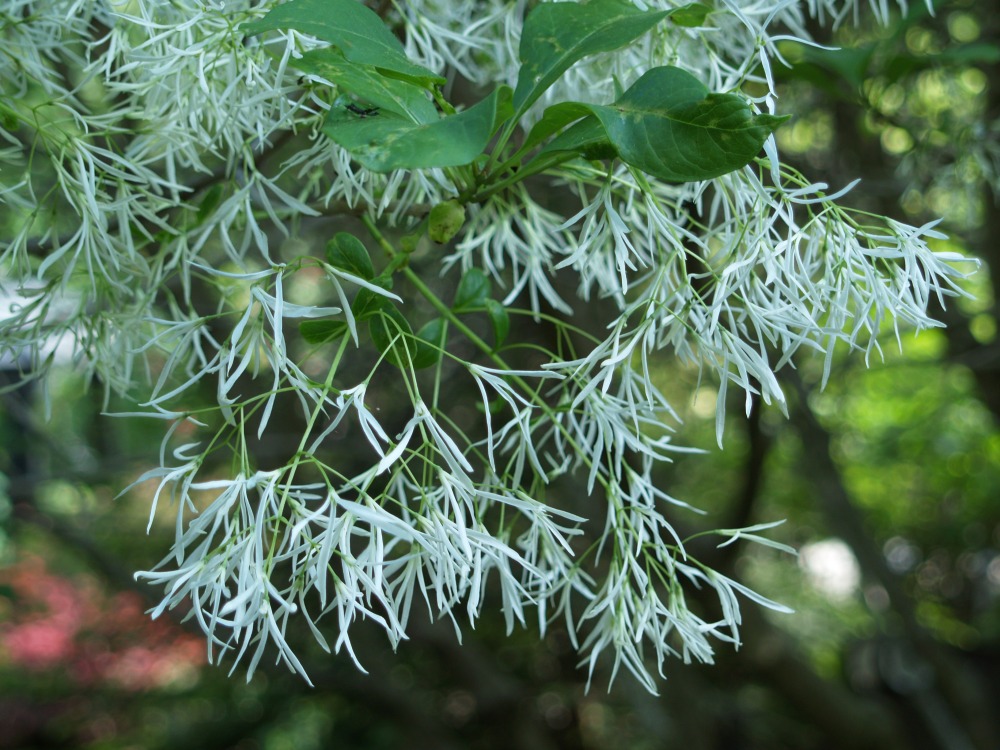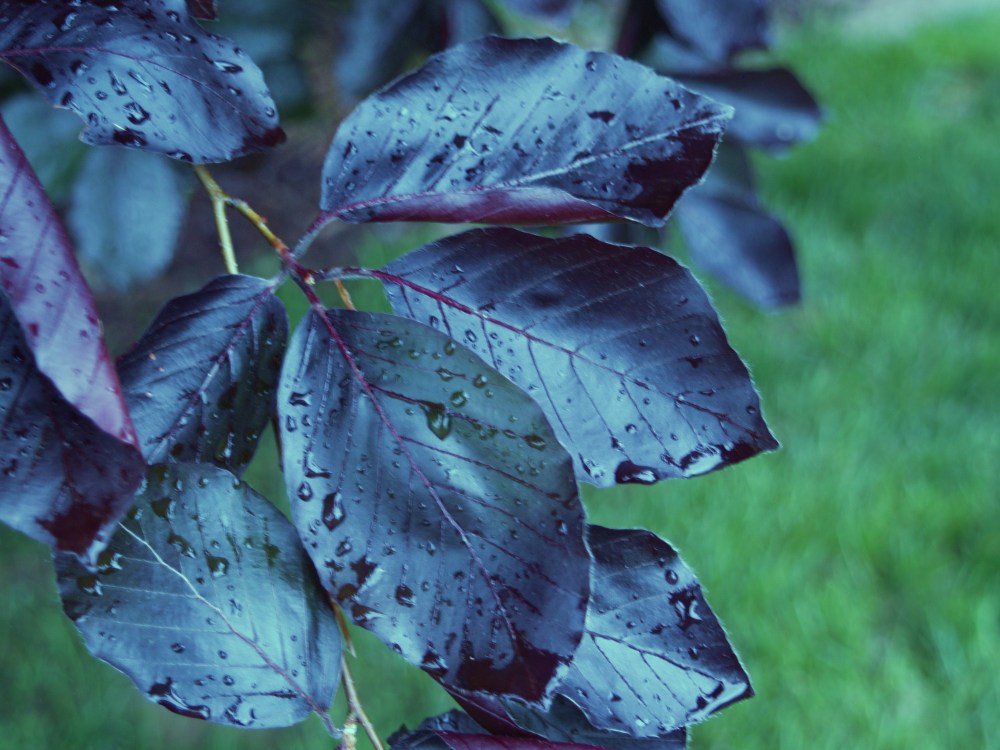“It is what it is.”
I suspect I say this too frequently when one issue or another pops up in the garden. Most are relatively minor problems that have been years in the making, so why be too bothered about them today? And, show me the gardener who has not erred in planting too closely, or in too much shade or sun. Or, tried to stretch a semi tropical into the garden by planting in a “protected” spot that was not nearly protected enough. It’s going to happen, and if the gardener becomes too upset by an occasional failure I suggest spending more time on a nice, indoor hobby.
I suspect that if fringetree (Chionanthus virginicus, below) flowered just a bit longer there would be one in nearly every garden. While flowering, there are few trees that garner such interest, but fringetree is mostly ordinary through the remainder of the year. It is the gardener’s good fortune if the blooms persist for much longer than a week, and if the days are warm flowers will fade more quickly. This year, parts of recent weeks have alternated between very warm and cool, and as luck would have it the warm days coincided with the start and end of fringetree’s flowering cycle. Still, I could not be disappointed.
I am less enthused that two of three fringetrees become hidden more each spring by wide spreading, variegated leaf redbuds (Cercis canadensis ‘Silver Cloud’, below). The lovely, mottled foliage of the redbuds is preferable once they have leafed, but as trees grow closer to maturity it is a shame that I did not space trees to accommodate their eventual size. Oh well, this worked splendidly for twenty years. In any case, the fringetrees are not ruined, they’re just not as visible as I’d prefer.
I recall visiting Jefferson’s home, Monticello, years ago with the family, and mischievously thinking that the low branched copper leafed beech beside the front entry would be splendid to climb. It’s likely I mentioned this to the boys, who probably had the good sense even at a young age to know that this was not appropriate for the setting, and that dad was just trying to stir things up a bit with mom. The tree was magnificent, and now I’m reminded of it by the purple leafed beech (Fagus sylvatica ‘Atropunicea’, below) in my front garden.
I recently recommended a Tricolor beech (Fagus sylvatica ‘Tricolor’, below) to a co-worker, but cautioned that the beech I planted grew imperceptibly through its first eight years. Then, once I was resigned that it was improperly located and would never grow, it grew as quickly as any tree. When I was recalling the purple beech for my recommendation I guessed that it was forty feet tall, but as I look at it today, it’s at least fifty, and maybe sixty. If there is a tree that is suitably described as magnificent, a large purple beech is it, and this one is.
The purple beech was not substantial enough to climb long ago when the kids were at home and inclined to climbing trees, but today it would be perfect. I suppose that even an old codger could go nearly to the top, with sturdy branches laid out as conveniently as you could ask for. But, it’s likely I’d need a step stool to get started, and what would the neighbors think of an old fool fifty feet up into the beech in the front yard?
I totally agree on the fringe tree – I’d seen my first one about 7 years ago, in full glory, and thought it was beautiful. I thought that if the streamers were in an interesting color, and hung on for a few weeks, that it would make a highly desirable addition to any garden. Maybe genetic engineering will achieve that in the near future.
I also saw my first tricolored beech about 10 years ago in a garden nursery, and marveled at its beauty. I was tempted to buy one, but at the time knew nothing of its habit, so didn’t want to take a chance on it until I saw a fully grown specimen. Strangely, no one in our entire large housing development has one in their yard.
Yet, I haven’t seen a fringe tree in our neighborhood either. Seems the vast majority of homeowners go for the standard and well known trees, such as blue spruce, maple, oak, birch, and ash. I, on the other hand, love variety, and have planted as many different kinds of trees as I can fit on my small quarter-acre plot.
I am mystified that so many prefer to be just like everyone else in the neighborhood. No doubt, maples, oaks, and spruce are proven trees, but I look to plant trees that are less common. I find that even landscape designers most often shy away from anything but the ordinary.
‘Silver cloud’ has an amazing leaf, I love it. Do you find redbuds to be short lived? The ones I’ve seen don’t seem to hang around too long.
I planted a ‘Dawyck Gold’ beech a few years ago and it was just starting to grow well when I had to move it again. It’s been sulking for the last three years but I have nope for next spring.
In twenty five years I’ve lost one redbud and another is struggling in less than ideal circumstances. ‘Silver Cloud’ has been here a long while, and shows no sign of decline. I suspect that many flowering trees are short lived in comparison to maples, oaks and beeches, but I don’t know if that means they live thirty or fifty years. Certainly, many redbuds will outlive the gardener who planted them.
Good luck with your beech, but I suspect it could take a few years longer to recover from the transplant.